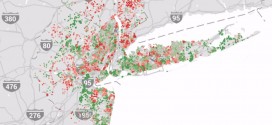Without a return to a robust private label securitization market for pristine borrowers, securitization of riskier loans won’t occur and without a vehicle to finance them, origination of these loans to be fairly limited.
That’s the conclusion of “The Rebirth of Securitization,” a white paper by the Urban Institute’s Laurie Goodman published September 10. Just seven days later CoreLogic’s Faith Schwartz approached the need for a viable vehicle to transfer risk to a private label marketplace.
“While there is much focus and activity around how to attract private label securitization so it may regain its footing, incentives for risk taking have been greatly diminished in the post crisis era,” she wrote.
“But to fully serve the marketplace of eligible borrowers, we need to assess the breadth of origination and servicing processes for transparency and effectiveness to meet the demands of the housing finance system. Are we serving the full spectrum of borrowers in the system who desire a loan and who have the capacity and ability to repay? Do we have the right programs, and educational tools to meet the generational demands of borrowing we will see from the millennial population?” she said in CoreLogic’s Housing Policy Update.
She noted that as of the first quarter of 2015, Fannie Mae, Freddie Mac, commonly referred to as the GSEs, and the Federal Housing Administration and Veteran’s Administration backed over 70 percent of first lien originations. Meanwhile, the private label securitization market remains lackluster, having declined from its 41 percent market share peak in 2006 to less than one percent over the past seven years. This is a reset of the investor mortgage market and flow of private capital into housing. Meanwhile, balance sheet lending or loans held by banks has grown to 28 percent as of the first quarter of 2015.
She lists four factors that improve the climate for a return of a private label marketplace:
- In 2003 borrowers with a credit score below 639 comprised 18 percent of purchase transactions which increased to 30 percent in 2007. Today the current combined number of purchase transactions is below 4 percent.
- Most loans are now originated with full documentation. The reduction of risk layering has contributed greatly to the contraction of loans being originated in housing with the elimination of the “no and low doc loans, which peaked in 2005 at nearly 42 percent of those purchase originations currently make up less than one percent.
- Existing home inventory supply constraints, limited affordable new construction, tight rental markets and stagnant increases to real incomes over the previous decade all heighten barriers of access and
- A host of new rules have been implemented by the newly created CFPB with the intent of advancing consumer protections to ensure that borrowers who are willing, capable and properly underwritten can attain a mortgage and eventual home ownership.
But “Thus far an expansive resurgence in private participation in credit risk exposure remains to be seen.”
The Urban Institute’s Goodman looks at the problem from an investor’s perspective. She notes that asset classes ranging from student loans to auto loans have bounced back from the Great Recession but mortgages have not.
“The securitization of less pristine mortgages will require more work and more time to rebound because investors must gain a level of comfort with prime jumbo securitization .Our view is that securitizations for these loans will initially emerge as financing transactions; over time and well after the reestablishment of the prime jumbo market, credit risk will be transferred on less than pristine collateral,” she wrote. She cites the need for better underwriting, more consistent Loan-Level Information, and notes that:
“In residential mortgage lending many conflicts of interest exist among the originator, the servicer, and the investors. Moreover, the incentive structure is often misaligned, accentuating these conflicts of interest. It is worth walking through how the misalignment of interests in the residential mortgage market actually plays out.”
However, she takes issue with those who argue the government’s advantages are responsible for the demise of a secondary market. “Yes, the government does have an advantage in funding. Yes, the government did step in and raise loan limits in 2008, allowing the GSEs and the FHA to insure loans they had not been able to before. But bank portfolios face the same competition, and they have grown considerably. It is very difficult to argue that the government funding advantage is a significant issue for the PLS market,” she wrote.
“Industry efforts to address standardization, conflict of interest, transparency, and communications are under way. These efforts can somewhat improve the relative economics of securitization. However, a macroeconomic environment in which balance sheet retention of pristine collateral is less attractive would certainly accelerate the reemergence of a robust private-label securities market for prime jumbo collateral,” wrote Goodman in her conclusion.
 RealEstateEconomyWatch.com Insight and Intelligence on Residential Real Estate
RealEstateEconomyWatch.com Insight and Intelligence on Residential Real Estate


One comment
Pingback: Private Label Securitization—the Missing Link | Belair Realty